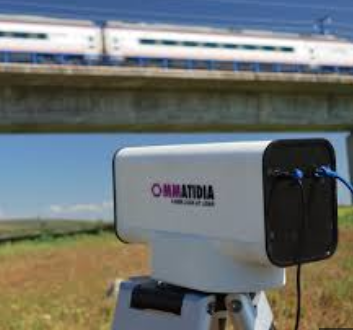The Power of 3D Imaging Technology in Modern Industries
In recent years, 3d imaging technology has transformed various industries by enabling the creation of detailed three-dimensional digital models of physical objects and environments. By capturing spatial data through specialized sensors and cameras, 3D imaging provides highly accurate and realistic representations that serve as valuable tools in fields such as healthcare, manufacturing, architecture, and entertainment. As the technology continues to advance, its applications expand, offering more precise measurements and better insights for decision-making.
What is 3D Imaging Technology?
3d imaging technology involves capturing the shape, size, and spatial details of an object or environment and converting that information into a three-dimensional digital model. This process is accomplished through various techniques, such as laser scanning, structured light scanning, and photogrammetry. Each of these methods collects data on the object’s surface and uses it to create a virtual model that can be manipulated, analyzed, and visualized in 3D software.
Laser scanning, for instance, uses laser beams to measure the distance to different points on an object, creating a “point cloud” of data that represents its surface. Structured light scanning projects patterns of light onto a surface and captures the deformation of these patterns to generate a 3D model. Photogrammetry, on the other hand, involves capturing multiple photographs of an object from different angles and using software to stitch them together into a 3D model.
Key Benefits of 3D Imaging Technology
1. Enhanced Accuracy and Precision: One of the standout features of 3D imaging technology is its ability to produce highly accurate and detailed models. The precision with which 3D scanners capture spatial data allows for the creation of models with fine detail, which is critical in industries such as manufacturing, healthcare, and architecture, where even the smallest deviation can lead to significant problems.
2. Improved Efficiency: 3D imaging technology streamlines workflows by enabling faster and more efficient data collection. Traditional measurement methods, such as manual measurement or 2D imaging, can be time-consuming and error-prone. With 3D imaging, data can be collected rapidly and processed quickly, resulting in faster decision-making and fewer delays in project timelines.
3. Non-Destructive Testing: In many industries, 3D imaging allows for non-destructive testing (NDT), meaning that objects can be analyzed without being physically altered or damaged. This feature is particularly valuable in fields like archaeology, where delicate artifacts are studied, or in aerospace, where components are inspected for structural integrity.
4. Visualization and Simulation: 3D imaging provides the ability to visualize complex objects or environments in three dimensions. This helps industries like construction and design to better plan and understand their projects before execution. Moreover, simulations based on 3D models can be performed to predict how objects or systems will behave under various conditions, providing valuable insights for design optimization.
5. Remote Collaboration: With the advent of digital models, teams across different locations can collaborate more effectively by sharing 3D models and conducting virtual reviews. This is particularly beneficial in industries like construction, where teams of engineers, architects, and contractors need to work together but may be geographically dispersed.
Applications of 3D Imaging Technology
1. Healthcare and Medical Imaging: 3D imaging plays a crucial role in modern healthcare, especially in areas like diagnostics, surgery planning, and prosthetics design. Medical imaging techniques like MRI and CT scans produce 3D representations of internal structures, helping doctors plan surgeries more accurately and providing insights into the health of tissues, organs, and bones.
2. Manufacturing and Quality Control: In manufacturing, 3D imaging is used to capture precise measurements of parts and assemblies, ensuring that products meet quality standards. It is also applied in reverse engineering, where existing components are scanned and converted into digital models for reproduction or modification.
3. Architecture and Construction: Architects and construction professionals use 3D imaging technology to create accurate models of buildings, infrastructure, and landscapes. These models help in visualizing the final product, performing structural analyses, and planning construction projects. Additionally, 3D imaging aids in renovation and restoration projects by capturing detailed data about existing structures.
4. Entertainment and Animation: In the entertainment industry, 3D imaging is widely used in the creation of visual effects, animations, and video games. By using 3D scans of objects, environments, and even people, studios can create highly realistic digital representations that are integrated into films and games, enhancing the viewer experience.
5. Surveying and Mapping: 3D imaging technology has revolutionized the surveying and mapping industry by providing highly detailed and accurate models of geographical areas. This is particularly useful in applications like urban planning, land development, and environmental monitoring, where understanding the topography and structure of the land is crucial.
Conclusion
3D imaging technology has become an indispensable tool in various industries, offering improved accuracy, efficiency, and flexibility in data collection and analysis. From enhancing medical diagnostics to revolutionizing manufacturing processes, the ability to create detailed three-dimensional models has opened up new possibilities for innovation and optimization. As the technology continues to advance, its applications will only expand, allowing industries to further benefit from the valuable insights and enhanced decision-making capabilities that 3D imaging provides. Whether for designing a building, inspecting a product, or mapping a landscape, 3D imaging is a critical tool in today’s digital world.

